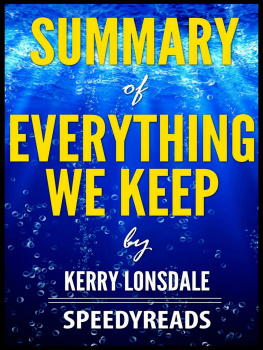Chris Lonsdale - The UK Equity Gap: The Failure of Government Policy Since 1945
Here you can read online Chris Lonsdale - The UK Equity Gap: The Failure of Government Policy Since 1945 full text of the book (entire story) in english for free. Download pdf and epub, get meaning, cover and reviews about this ebook. year: 1997, publisher: Routledge, genre: Romance novel. Description of the work, (preface) as well as reviews are available. Best literature library LitArk.com created for fans of good reading and offers a wide selection of genres:
Romance novel
Science fiction
Adventure
Detective
Science
History
Home and family
Prose
Art
Politics
Computer
Non-fiction
Religion
Business
Children
Humor
Choose a favorite category and find really read worthwhile books. Enjoy immersion in the world of imagination, feel the emotions of the characters or learn something new for yourself, make an fascinating discovery.
- Book:The UK Equity Gap: The Failure of Government Policy Since 1945
- Author:
- Publisher:Routledge
- Genre:
- Year:1997
- Rating:5 / 5
- Favourites:Add to favourites
- Your mark:
- 100
- 1
- 2
- 3
- 4
- 5
The UK Equity Gap: The Failure of Government Policy Since 1945: summary, description and annotation
We offer to read an annotation, description, summary or preface (depends on what the author of the book "The UK Equity Gap: The Failure of Government Policy Since 1945" wrote himself). If you haven't found the necessary information about the book — write in the comments, we will try to find it.
Chris Lonsdale: author's other books
Who wrote The UK Equity Gap: The Failure of Government Policy Since 1945? Find out the surname, the name of the author of the book and a list of all author's works by series.
The UK Equity Gap: The Failure of Government Policy Since 1945 — read online for free the complete book (whole text) full work
Below is the text of the book, divided by pages. System saving the place of the last page read, allows you to conveniently read the book "The UK Equity Gap: The Failure of Government Policy Since 1945" online for free, without having to search again every time where you left off. Put a bookmark, and you can go to the page where you finished reading at any time.
Font size:
Interval:
Bookmark:

AMA | Association of Metropolitan Authorities |
BES | Business Expansion Scheme |
BIS | Business Introduction Services |
BL | British Leyland |
BSS | Business Start-up Scheme |
BTG | British Technology Group |
BVCA | British Venture Capital Association |
CBI | Confederation of British Industry |
Dol | Department of Industry |
DTI | Department of Trade and Industry |
EIS | Enterprise Investment Scheme |
ICFC | Industrial and Commercial Finance Corporation |
IMF | International Monetary Fund |
IRR | Internal Rate of Return |
MBI | Management Buy-In |
MBO | Management Buy-Out |
NEB | National Enterprise Board |
NRDC | National Research Development Corporation |
OECD | Organisation of Economic Co-operation and Development |
SDA | Scottish Development Agency |
SDF | Scottish Development Finance |
SE | Scottish Enterprise |
SME | Small to Medium Size Enterprise |
TEC | Training and Enterprise Council |
USM | Unlisted Securities Market |
VCR | Venture Capital Report |
VCT | Venture Capital Trust scheme |
WDA | Welsh Development Agency |
Font size:
Interval:
Bookmark:
Similar books «The UK Equity Gap: The Failure of Government Policy Since 1945»
Look at similar books to The UK Equity Gap: The Failure of Government Policy Since 1945. We have selected literature similar in name and meaning in the hope of providing readers with more options to find new, interesting, not yet read works.
Discussion, reviews of the book The UK Equity Gap: The Failure of Government Policy Since 1945 and just readers' own opinions. Leave your comments, write what you think about the work, its meaning or the main characters. Specify what exactly you liked and what you didn't like, and why you think so.











